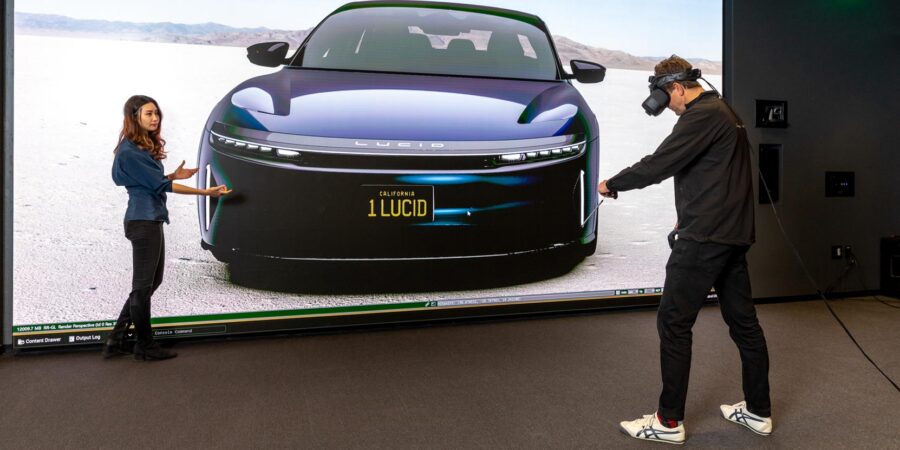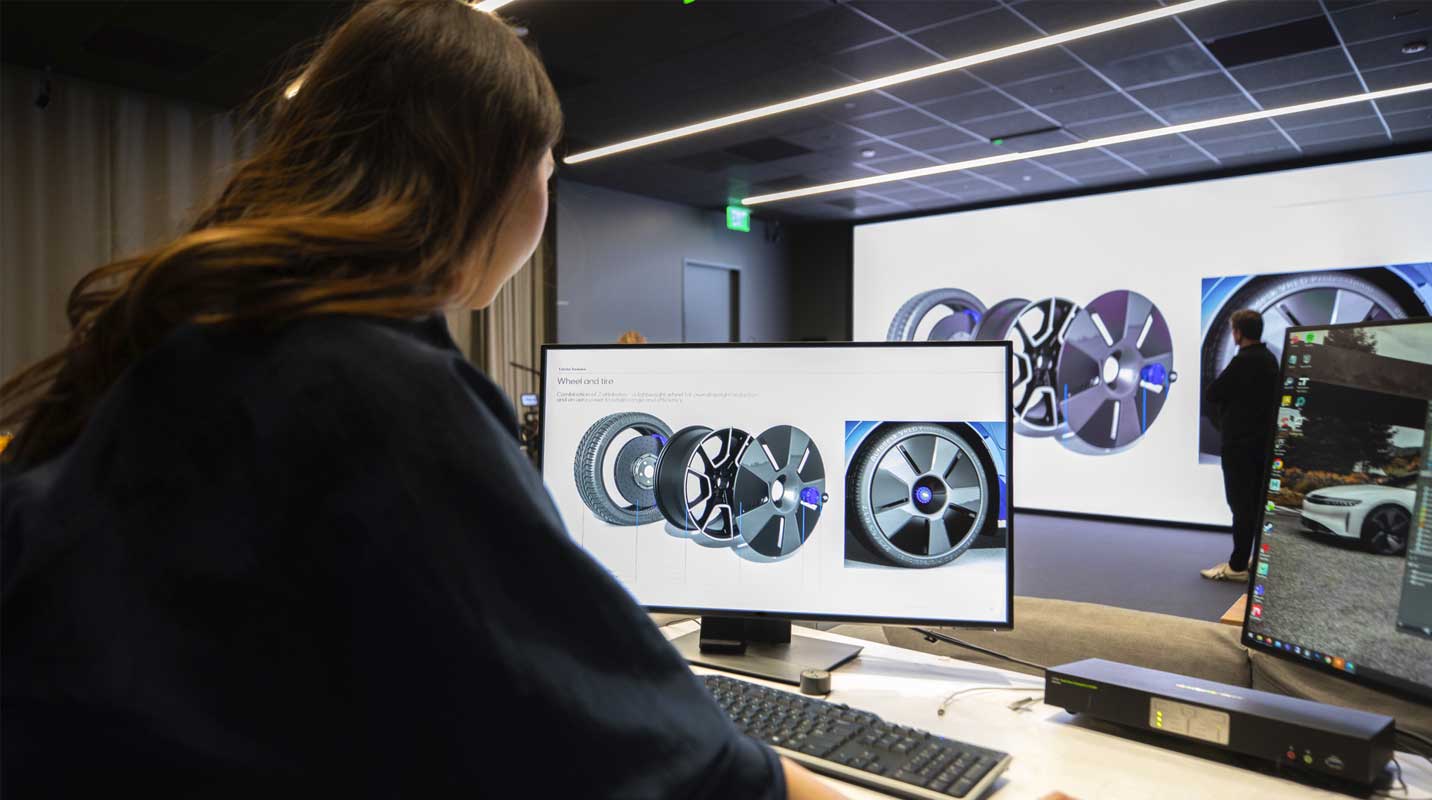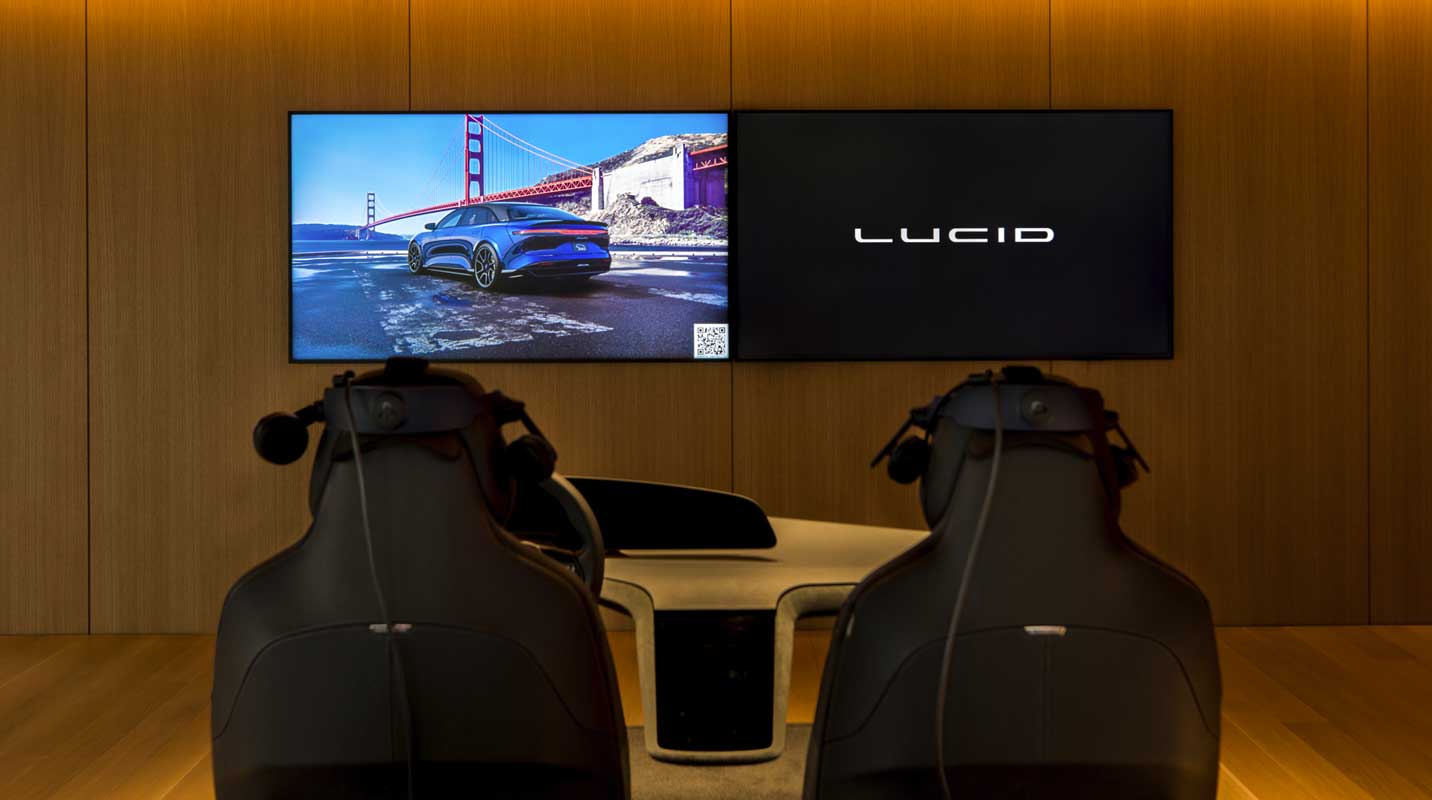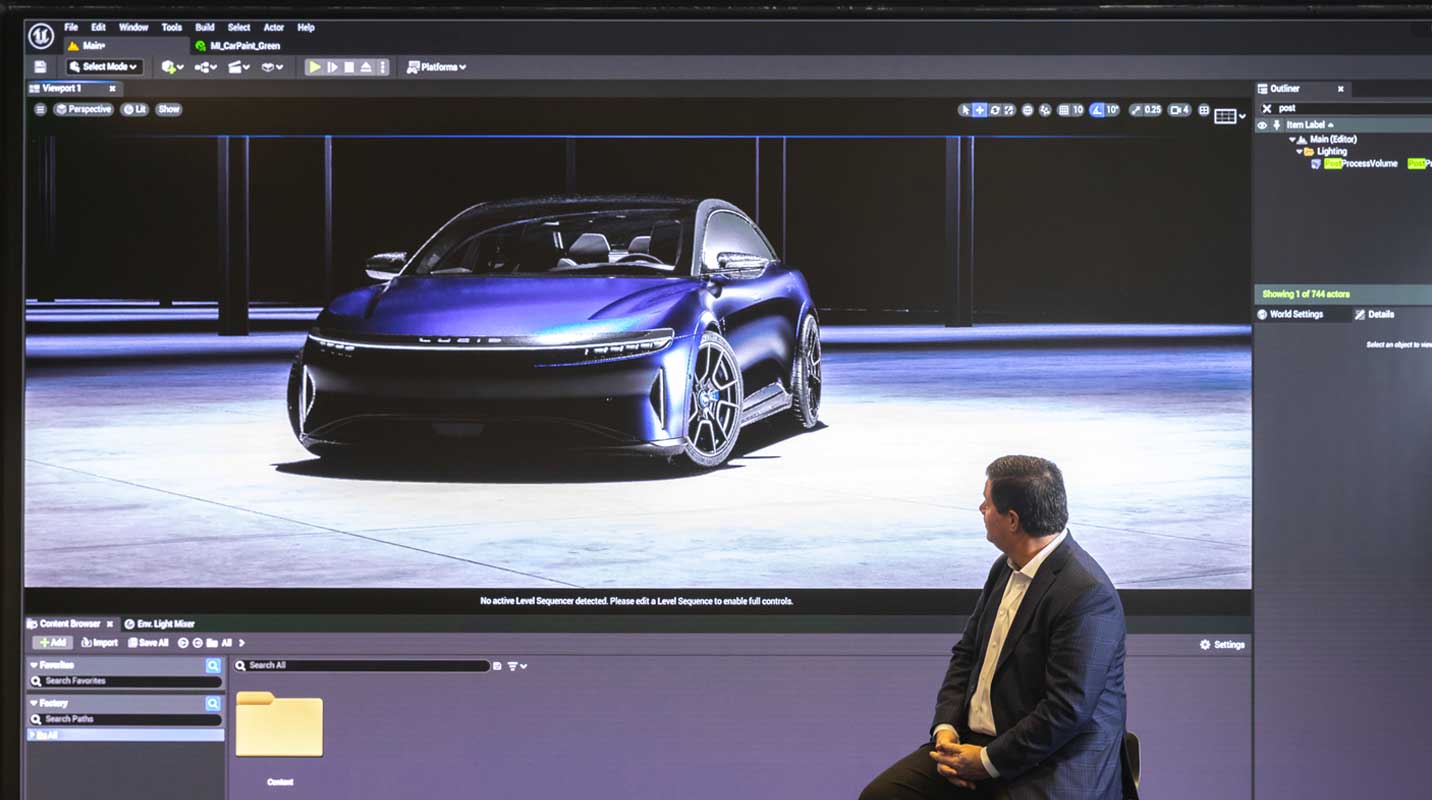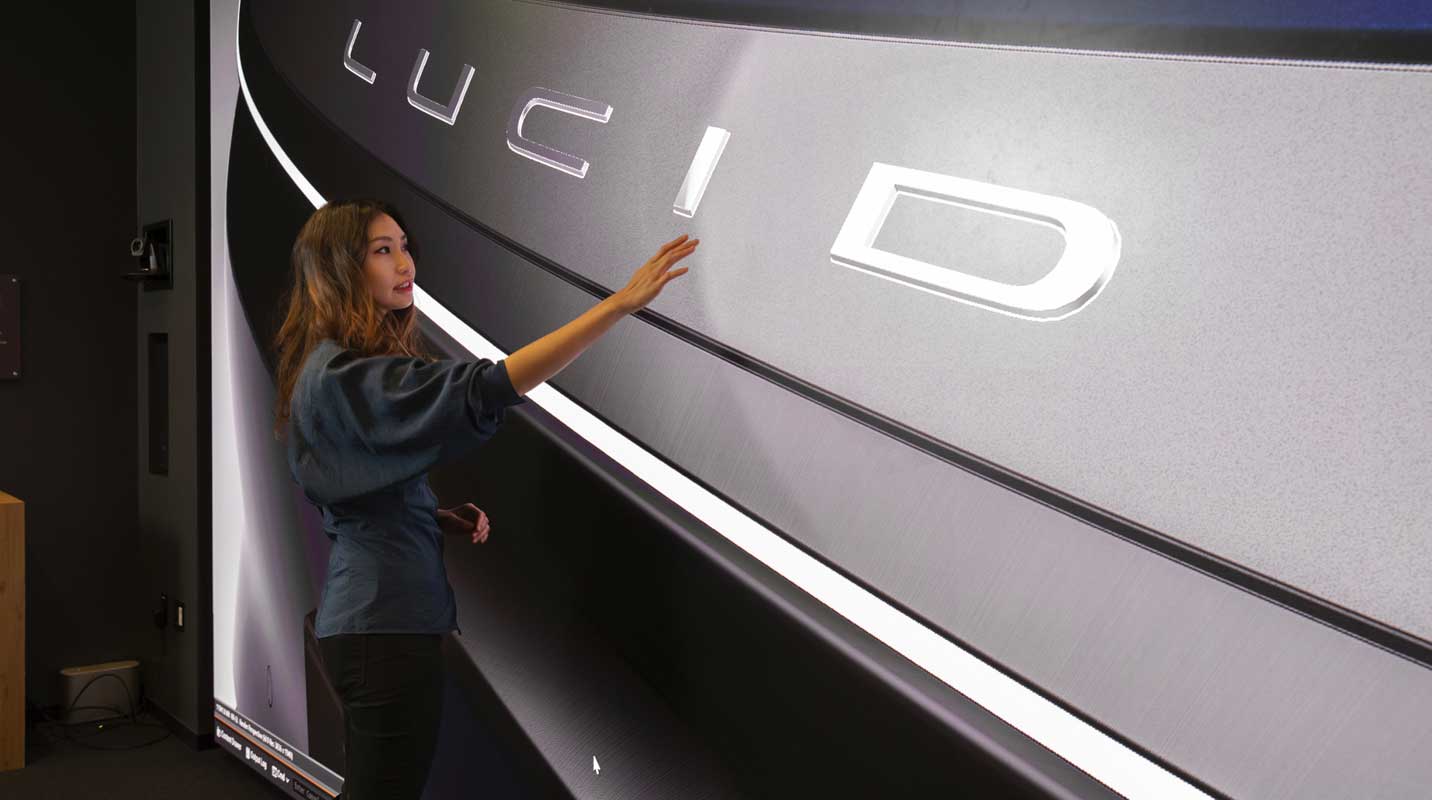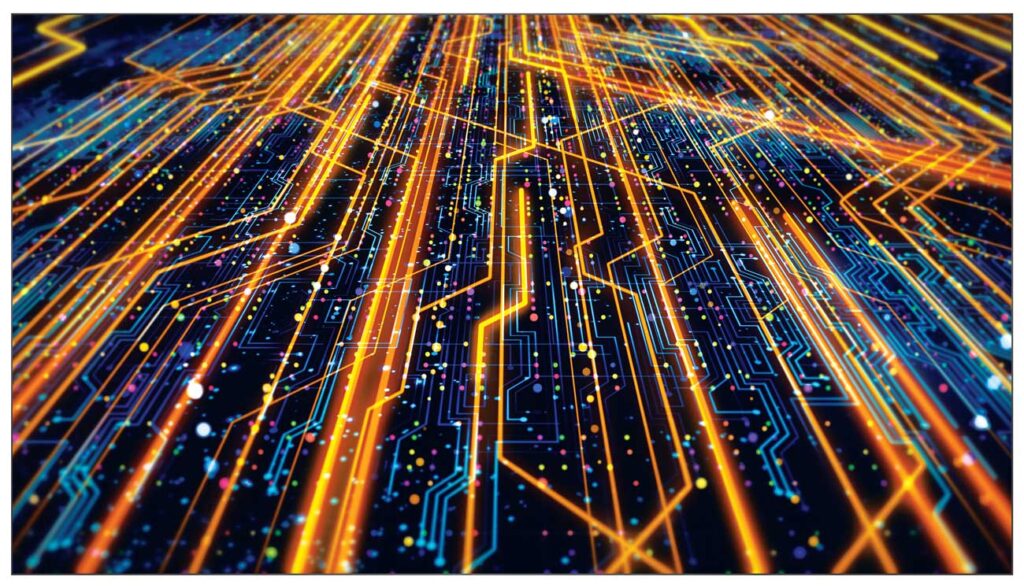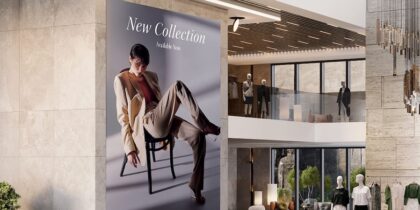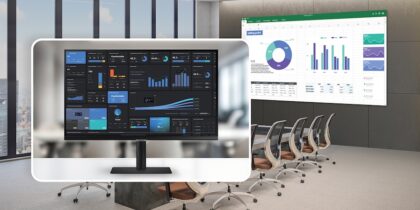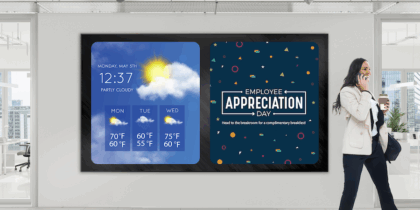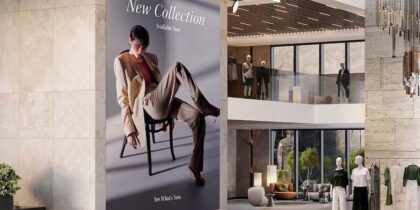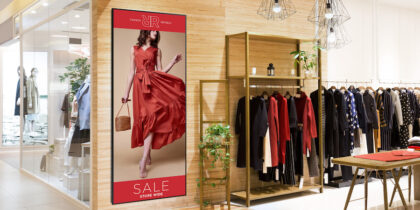
The Challenge
The design team at Lucid Motors was looking for a new, state-of-the-art display to take the design process to the next level. With a blank slate for the installation in their new design studio, the team wanted a display capable of rendering in true color and high resolution. But even more than that, the design team needed a screen that would accommodate a full-size side view of Lucid’s luxury electric vehicles, without taking up valuable studio floor space.
The Solution
The Wall, Samsung’s iconic large-format microLED display with a pixel pitch of 0.8mm, offered Lucid designers a perfect state-of-the-art solution to their display challenges. Not only is the on-screen image sharp and in true color, but the scalable modular design of The Wall allows the Design and Engineering teams to view the image at a scale of 1:1. At the same time, the flexible yet compact design required no complex support and cooling structures, thereby allowing The Wall to be ideally positioned in Lucid Motors’ design studio.
"It is important to be able to view the design under different lighting conditions, with varying intensity and ambient hues."
– Jenny Ha, Exterior Design Manager for Lucid Motors
The Results
For the designers at Lucid Motors, seeing their concepts come to life in true color on a high-resolution full-sized display screen removes much of the uncertainty that often accompanies the first viewing of the physical verification model. The accuracy of the display when combined with virtual reality (VR)-imaging software has given the team the confidence to extend the design freeze much closer to the first verification model. Furthermore, because of the compact design of the display, the Design and Engineering teams have sufficient space to conduct frequent collaborative workshops.

About Lucid Group
Lucid’s mission is to inspire the adoption of sustainable energy by creating advanced technologies and the most captivating luxury electric vehicles centered around the human experience. The company’s first car, the Air, is a state-of-the-art luxury sedan with a California-inspired design. Lucid Air Grand Touring features an official EPA estimated 516 miles of range or 1,050 horsepower. Assembled at Lucid’s factory in Casa Grande, Arizona, deliveries of Lucid Air are currently underway to customers in the U.S., Canada, Europe, and the Middle East.
The Challenge
Bringing a full-size digital design to life
Having created the all-electric Lucid Air luxury sedan with the aid of an older generation digital display, the design team at Lucid Motors sought to equip its new design studio with a state-of-the-art screen capable of advancing the collaborative design of future models.
The team was looking for a digital display to support the design of Lucid’s future sustainable luxury vehicles from a clean sheet. From the first rudimentary concept sketches at the start of the project through to the design freeze, designers wanted to see an accurate rendering of the concept in high resolution, at all stages of development.
However, one of the greatest challenges to digital modeling has always been accurately depicting the contrasting detail that designers rely on to accentuate novel design cues. This often subtle detail has traditionally been difficult to contextualize digitally.
The display has to accurately depict the interaction of color, geometry and light to create true-to-life, full-size renderings of the vehicle’s surfaces and form, including that of the cabin. Thus, a high-resolution display is paramount when reviewing the vehicle’s development to accurately assess the impact of subtle changes made over several iterations of the original concept.
Exterior design manager, Jenny Ha, explains: “It is important to be able to view the design under different lighting conditions, with varying intensity and ambient hues.”
Plus, interior and exterior design teams often do design reviews with engineering and finance teams. Being able to show their design recommendations for everyone to see was critical.
Moreover, to foster the spirit of collaboration, the digital display’s installation needed to be compact to free up space in the design area for multidisciplinary teams to hold those interactive design workshops.
Plus, the display technology would also have to integrate fully with VR and engineering simulation tools.
Having met with Samsung in late 2020 and early 2021, Reuben Bush, the audio visual support lead, was convinced Samsung’s The Wall was the ideal solution.
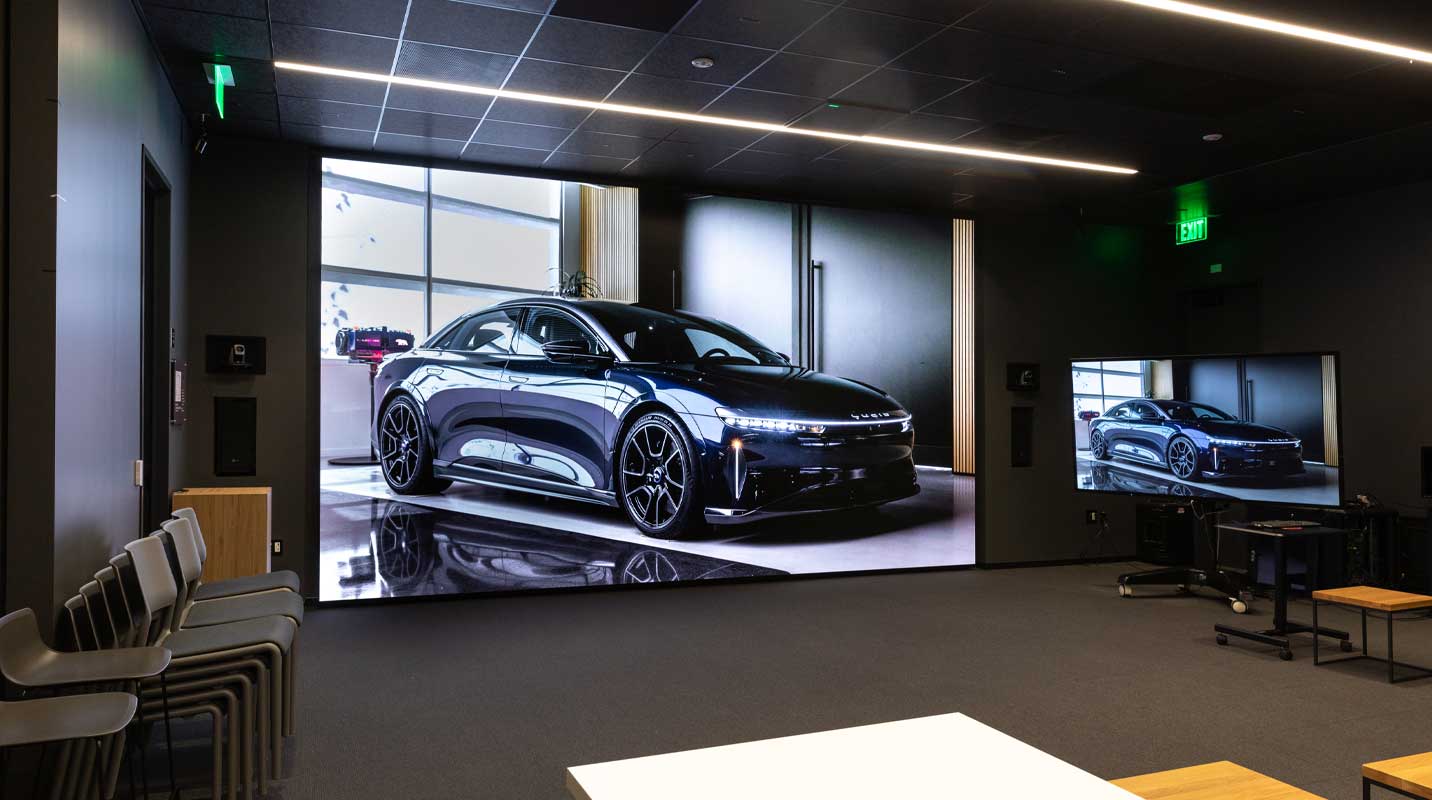
The Solution
With MicroLED technology, The Wall's superior visuals were choice
To meet the high standards set by the design team at Lucid Motors, the digital screen had to be capable of delivering high-definition image quality and color resolution at a 1:1 scale in side view. This accurate portrayal of the design is critical when weighing up the impact of any changes to the vehicle’s exterior or interior styling during development.
Needless to say, Samsung’s MicroLED technology that powers The Wall was the perfect solution, producing full-size lifelike images that look stunning from any angle, even up close.
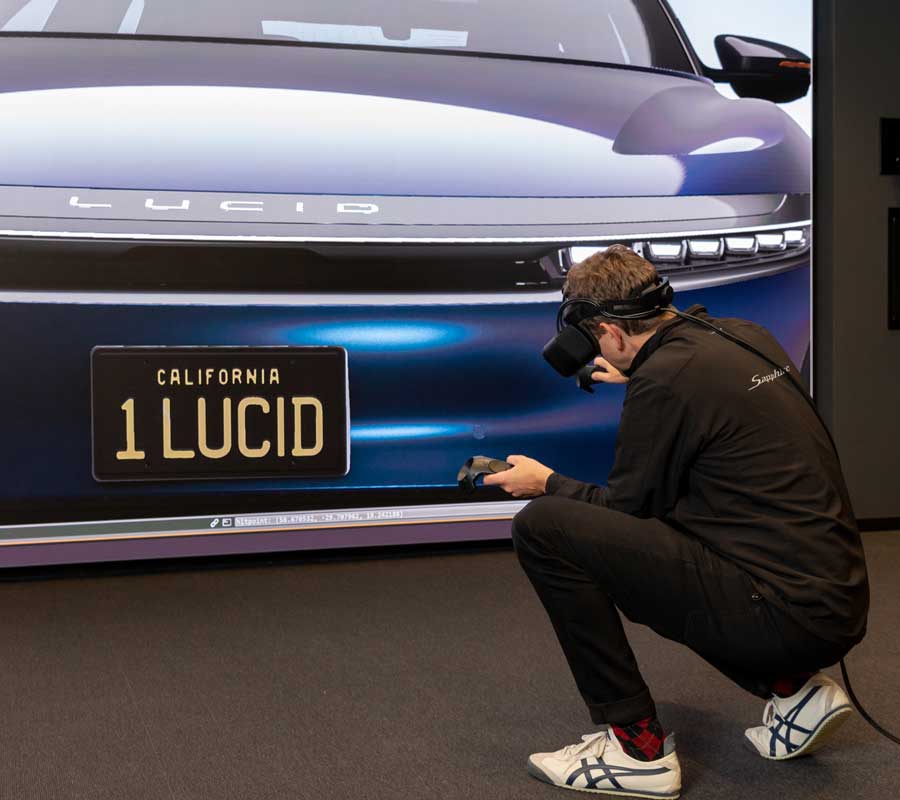
The clarity in true-to-life color, obtained through the use of millions of bright, micrometer-scale LED lights and a deep black background, is exactly what the design and engineering teams require when reviewing full-size digital renditions of the design. Not only does the true-life color produce a realistic rendering of the design, but the high-resolution display faithfully reproduces the reflection of light off complex 3D surfaces.
The Wall chosen for Lucid Motors’ Newark design studio is 255 inches across. This renders the image at a 1:1 ratio while taking up less space than most other similar displays.
Unlike other display systems that often require a complex dedicated support structure and cooling system that takes up space, The Wall requires minimal structural support and ventilation thereby reducing the installed volume.
The power of The Wall is further enhanced through its integration with VR hardware and engineering simulation software allowing for an effective feedback loop between the engineering team and the designers. What is more, the intuitive control of the display promotes collaborative development of the design with easy input from all participants.
The many features of The Wall have proven invaluable in delivering the results the design team was expecting from the class-leading digital display.
The Technology
The Wall
The Wall makes a bold, breathtaking statement like no other. The possibilities are endless. A deep black background blankets the screen with perfect uniformity, creating a seamless canvas for purer black levels with enhanced depth.
The Results
The Wall brings Lucid's creative minds together in collaborative design
The Wall, powered by Samsung’s superior MicroLED technology, allows interior and exterior designers to view and review their designs in true-to-life color at a 1:1 scale. This authentic image rendition allows engineering and design teams to effectively implement Lucid’s philosophy through collaboration to create sustainable mobility.
This is particularly true with the design and styling of the exterior of the vehicle, where aesthetic styling changes could negatively impact the aerodynamic performance of the package. The ability to integrate the digital display with engineering design and simulation software allows the engineering team to rapidly evaluate the impact of any change on the overall efficiency of the design. Through close collaboration between engineering and design teams, the decision-making process can be accelerated, thereby saving development time and money.
Ha describes the importance of viewing the high-resolution full-scale design on The Wall in bringing together the technical requirements of the aerodynamic team with the aesthetic styling of the design team: “It is about finding that balance, that sweet spot, where the exterior team is happy that the car looks clean and beautiful, while the aero team is happy with the functional performance.”
The power of The Wall is also seen in the interior cabin design where the materials and surfaces are often similar in appearance and texture, making selection during the design phase challenging. The full-size high-definition imaging The Wall’s MicroLED technology provides, allows designers to discern even the smallest difference when choosing interior trim materials.
And when integrated with 3D VR visualization software, the design team can truly visualize the final product — with the exterior surfaces, volumes and forms and interior textures of the materials displayed exactly as would be seen in true life.
This accurate digital depiction of the design also reduces the reliance on traditional clay modeling, although it remains an important component of the design process. This not only saves time and money but allows designers to move design freeze closer to the actual fabrication of the prototype of the body in white.
Looking to the future, the flexibility of the modular design of The Wall means that, should it be required, The Wall can be extended to accommodate the design of larger passenger vehicles including SUVs. The modular design also means the individual panels can be repurposed for other applications if desired.
Lucid’s design teams look forward to creating many more cutting-edge post-luxury designs, aided by the accurate rendition of the images on the high-resolution full-size MicroLED display.
